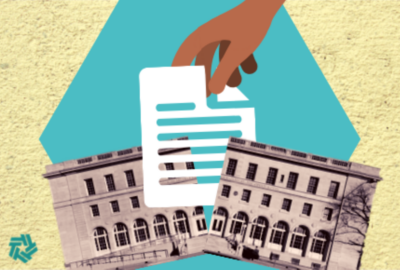When you’re standing idly in line at the airport or watching a firetruck rush to its destination, the last thing on your mind may be networks. But behind the scenes, the networks and IT infrastructure used by federal, state and local governments are hard at work making life easier and safer for Americans in airports, on the road and in a multitude of other areas.
Intelligent lighting, gunshot detection, and intersection analytics are reducing car accidents, crime and traffic by using artificial intelligence and big data.
But to use those technologies and add new ones to the government’s arsenal, those networks need to modernize at the pace of change. To do that takes planning and cooperation to ensure networks grow safely and securely.
“The key to modernization from a cybersecurity perspective is building security plans in from the outset,” said Martin Kessler, chief information security officer at Verizon Business Group, during a Special Bulletin Review: Securing our Citizens While Modernizing, sponsored by Verizon. “That allows government agencies to improve their security posture as part of their modernization efforts. The reality is no matter how mature an agency’s cyber plan is there will be incidents. The key is to operate through an attack.”
Kessler said it’s critical that agencies develop incident response playbooks and constantly exercise those plans to develop muscle memory.
Not only that, agencies should invite outside organizations to those exercises and introduce the element of surprise to press themselves harder.
“We are seeing the cyber threat evolve with time,” Kessler said. “As agencies modernize, one of the pitfalls we see is they modernize their technology, but they won’t also evolve their ability to detect, and ultimately contain, cyber threats. It’s really important for our customers and agencies to continue to evolve their cybersecurity defenses. We do the same at Verizon, as we roll out new products and services, we also have to involve our own cybersecurity program and make sure our security is wrapping around the new products.”
Federal agencies are starting to modernize into the 5G landscape and to do that they need to take into account all of those security lessons. However, the next generation network will also add new aspects to tighten security.
“5G will allow breakthroughs in artificial intelligence, robotics, the internet of things, the list goes on and on,” Kessler said. “In addition to the transformative effects 5G will have on agencies and their missions, it’s also a step forward in terms of network security. There’s new security layers that are built in, including additional encryption, additional security at the edge and also a new feature that allows us to isolate devices until they are fully authenticated into the environment.”
5G has serious implications for agencies like the Federal Aviation Administration.
“All of these modernization opportunities are going to benefit agencies, which directly relate to benefits for our citizens,” Kessler said. “The FAA’s number one issue is the weather, which is none of us can control. The latency of a 5G network is just a few milliseconds. When you think about cloud computing at the edge, plus the speed of that 5G network, plus real-time situational awareness from a number of forecasting systems, the air traffic controllers on the runway will have absolutely real-time information that will allow them to do their job better and ultimately deliver better services to the citizen. This is just the beginning. Can you imagine the impact of augmented and virtual reality on disaster response and training scenarios? The opportunities to improve mission are limited only by our imagination.”
Elements of Cybersecurity
The key to modernization from a cybersecurity perspective is building security plans in from the outset. That allows government agencies to improve their security posture as part of their modernization efforts. The reality is no matter how mature an agency’s cyber plan is there will be incidents. The key is to operate through an attack.
Martin Kessler
Chief Information Security Officer, Verizon Business Group
We are seeing the cyber threat evolve with time. As agencies modernize, one of the pitfalls we see is they modernize their technology, but they won’t also evolve their ability to detect, and ultimately contain, cyber threats. It’s really important for our customers and agencies to continue to evolve their cybersecurity defenses. We do the same at Verizon, as we roll out new products and services, we also have to involve our own cybersecurity program and make sure our security is wrapping around the new products.
Martin Kessler
Chief Information Security Officer, Verizon Business Group
All of these modernization opportunities are going to benefit agencies, which directly relate to benefits for our citizens.
Martin Kessler
Chief Information Security Officer, Verizon Business Group
Listen to the full show:
Copyright
© 2024 Federal News Network. All rights reserved. This website is not intended for users located within the European Economic Area.









